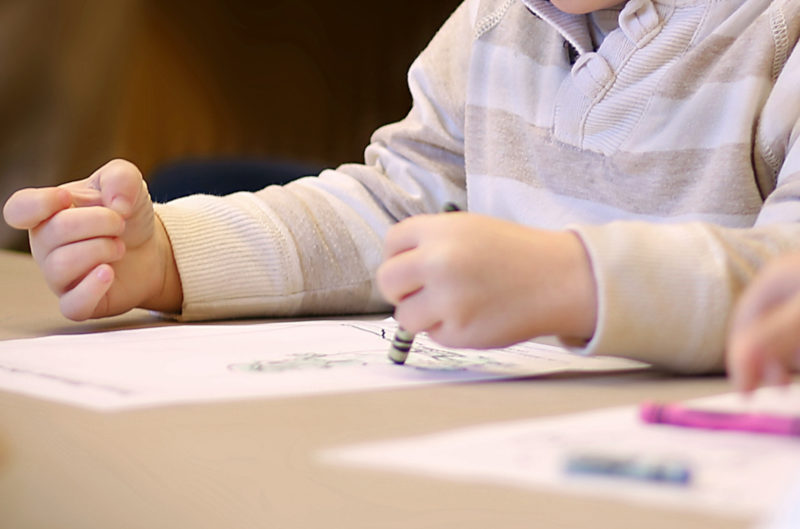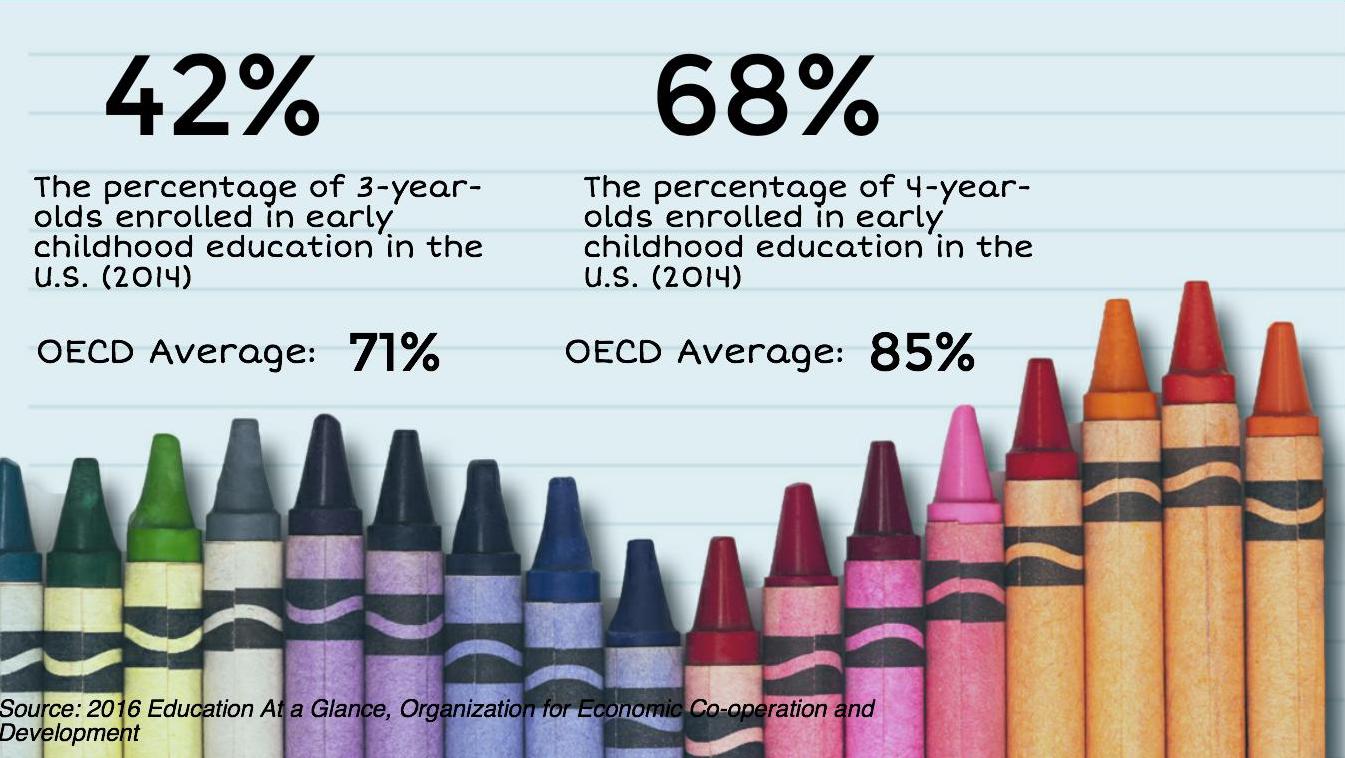 Strong bipartisan support tends to elude many education issues, but not when it comes to expanding access to early childhood education. Study after study has outlined the cognitive and social benefits of these programs and a 2016 survey by the First Five Years Fund found that 73% of the electorate - 54% of Republicans, 70% of Independents, and 91% of Democrats - support a federal plan that helps states and local communities provide better access to quality early education. According to the American Institutes for Research, 36 states have 220 bills related to early childhood education on their legislative agendas.
Strong bipartisan support tends to elude many education issues, but not when it comes to expanding access to early childhood education. Study after study has outlined the cognitive and social benefits of these programs and a 2016 survey by the First Five Years Fund found that 73% of the electorate - 54% of Republicans, 70% of Independents, and 91% of Democrats - support a federal plan that helps states and local communities provide better access to quality early education. According to the American Institutes for Research, 36 states have 220 bills related to early childhood education on their legislative agendas.
Still, despite all the attention, not much has been done in the United States to move the needle on universal access. Over the past few years, the campaign to expand early education has been global and most other industrialized nations are forgeing ahead.
According to the Organization for Economic Co-operation and Development (OECD), enrollment rates in early childhood or primary education programs rose across OECD member countries - from 54% in 2004 to 71% in 2014 for 3-year-olds and from 73% to 85% for 4-year-olds. This statistic is just one of many that can be found in the new 2016 Education At a Glance, OECD's annual compendium of facts and figures comparing education systems around the world.
The United States, according to the data, has one of the lowest enrollment rates among OECD countries. As France, Belgium, Israel, Spain, and Norway have pushed their enrollment rates for both 3 and 4-year-olds close to 100%, the U.S. lags far behind with rates of 39% for children aged 3 and 68% for children aged 4. That's a rank of 29th out of 34 nations.
 Moreover, U.S. enrollment rates are virtually unchanged since 2005, with only a minor increase in enrollments for 3-year olds recorded over the past decade.
Moreover, U.S. enrollment rates are virtually unchanged since 2005, with only a minor increase in enrollments for 3-year olds recorded over the past decade.
The OECD report points out that 15-year-olds who have at least one year of early childhood education under their belt generally perform better on the Programme for International Student Assessment (PISA) than those who did not. In addition, early childhood education can be especially beneficial for immigrant students. Those in OECD countries who were enrolled in an early education program scored on average 49 points higher on the PISA reading assessment.
In the United States, results were similar. Forty-one percent of students who did not attend any early education program were more likely to score lower on the PISA math assessment, while only 24% of those who were enrolled were likely to be low-performers.
Read the 2016 Education At a Glance or the U.S Summary








